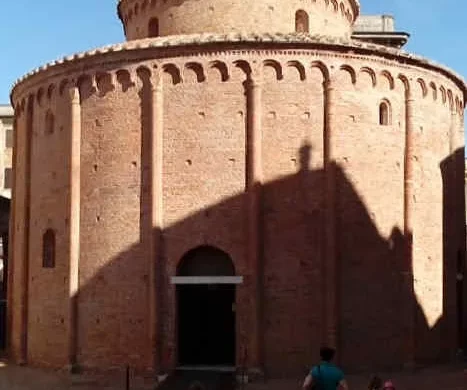
Summer Travels Italy Part I
The Rotonda of Saint Lorenzo, which was dedicated to St. Lorenzo. – The building of this church was started in 1083 A.D. and finished around 1115 A.D.

The Rotonda of Saint Lorenzo, which was dedicated to St. Lorenzo. – The building of this church was started in 1083 A.D. and finished around 1115 A.D.
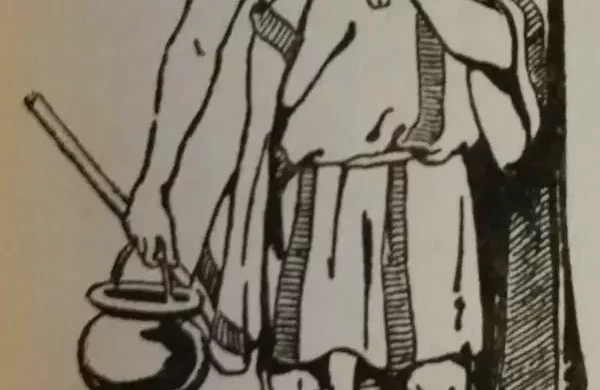
The Pallium-Herbert Norris History The Pallium-Herbert Norris: From the 6th century till the 1st century B.C., the Greeks wore a particular linen or wool garment. People of the working… Read more The Pallium-Herbert Norris →
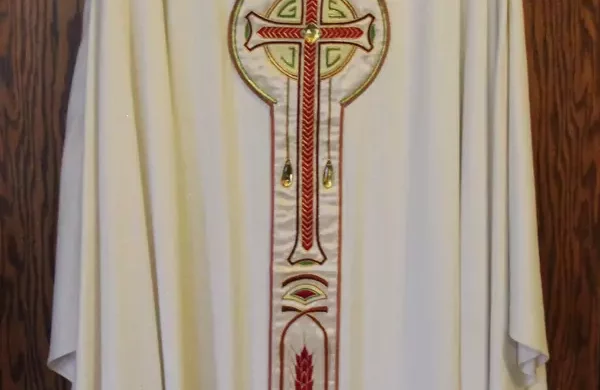
The Chasuble Percy Dearmer The Chasuble Percy Dearmer: Did you ever look at a poncho and think that it reminded you of something familiar? We know that the poncho,… Read more The Chasuble Percy Dearmer →
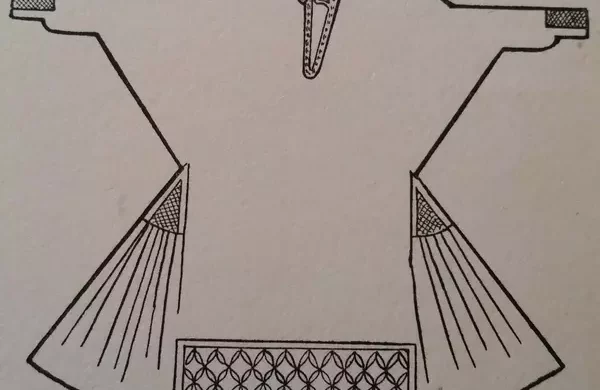
he Alb is a vestment that can trace its origin to six ancient garments: the Kolobus, the Tunica, the Colobim, the Tunica Talaris, the Subucula, and finally the Tunica Alba. These garments were common in Greek or Roman times, some garments being used by both cultures. They are not six manifestations of one garment, but rather six that are distinct enough to make note of the differences.
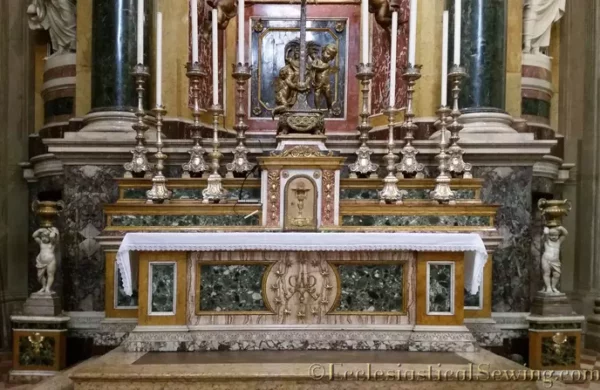
Altare Dei–The Altar of God Altare Dei–The Altar of God: Upon entering the sanctuary of a Christian Church, those coming to worship immediately have their gaze directed toward a… Read more Altare Dei–The Altar of God →
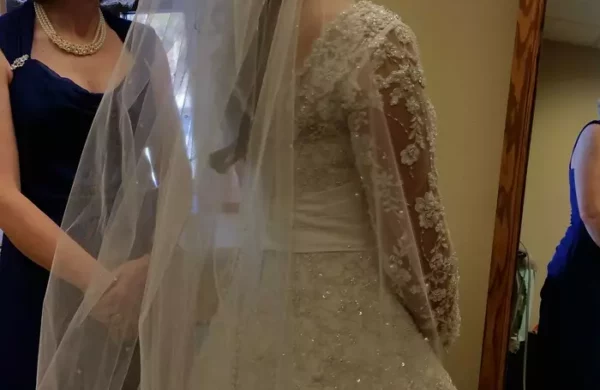
Ecclesiastical Sewing would like to officially welcome Ashley Zerwas to our team. Ashley is Carrie’s only daughter and she has taken a full-time job working for the family business after recently graduating college. When the Ecclesiastical Sewing storefront opens, Ashley will be helping to run the business behind the scenes. Ashley will manage social media, as well as assist with product development and sourcing. Ashley will also take on the role of Editor in Chief for Ecclesiastical Sewing.
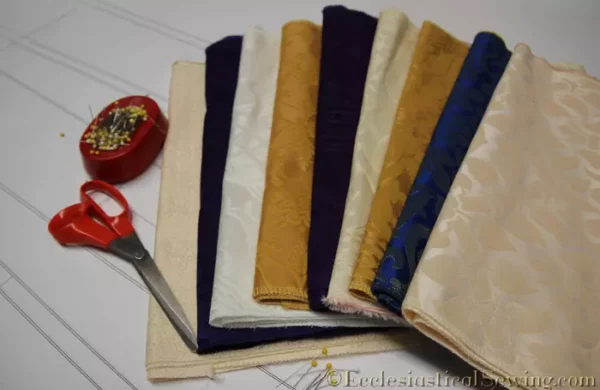
The fabrics, from bottom to top, are York Brocade – Ivory, Winchester Brocade – Purple, Fairford Brocade – Bridal White, Ely Crown – Gold, Fairford Brocade – Purple, Fairford Brocade Ivory, Fairford Brocade Gold, Fairford Brocade – Blue/Gold, and Winchester Brocade- Ivory. These durable fabrics are well-suited for making pastoral stoles, designed to withstand the demands of hand embroidery. With a higher thread count and dense weave, they offer both durability and weight, ensuring the stoles hang straight and stay in place during use.

Visiting a grand Cathedral – The Cathedral of St. Helena in Helena Montana a stunning example of the masterful use of church design.
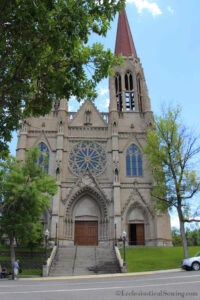
The capital of Montana is Helena. The cathedral’s entrance features impressive stone carvings, and the interior is grand with rich burgundy tones, metallic gold paint, and brass fixtures. The stained glass windows, numbering over 75, exhibit meticulous detail, resembling painted scenes with fine facial features, expressive eyes, and a heavenly gaze.
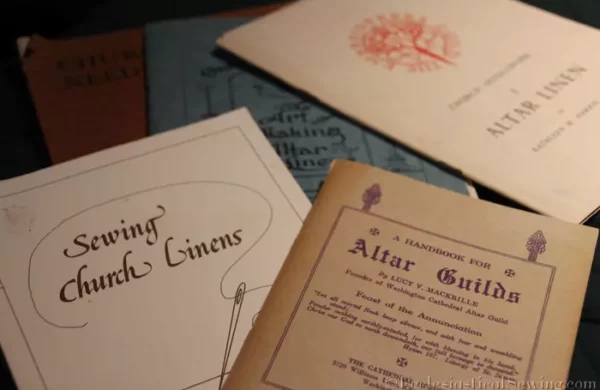
Fair Linens are hand hemmed with a simple slip stitch worked in even tiny stitches. The quality of the hand hemming is determined by the number of stitches made in each inch of length, as well as the evenness of the stitching. To aid in obtaining even, tiny stitches, use a single strand of fine cotton thread such as YLI Heirloom Thread which is a 100/2 size, or a similar fine sewing thread.
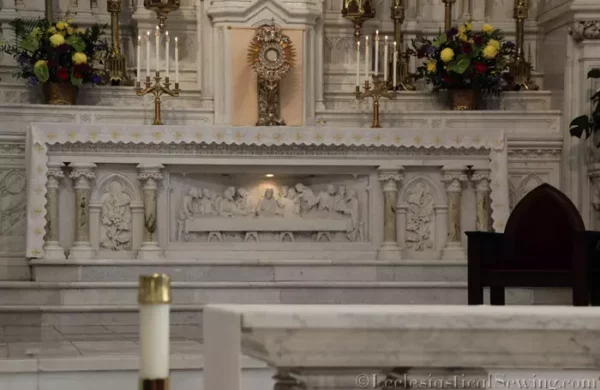
The measurement of making an Altar Fair Linen – The altar height: measure from the top edge of the altar to the floor. Measure the width of the altar from the front to the back. Measure the length of the altar from one side to the opposite side. Optional: measure the hang from the top edge down the side of the Fair Linen to match the length of an altar hanging.
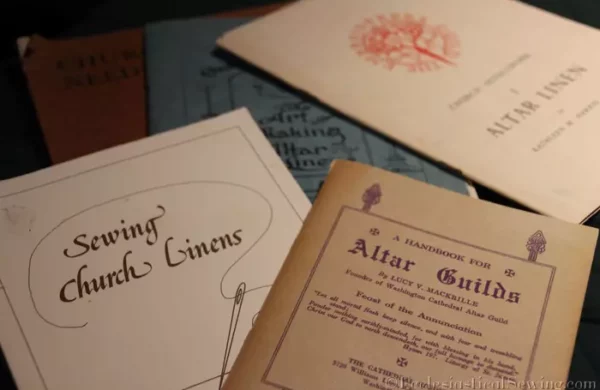
Altar linens serve distinct liturgical functions: Fair Linen covers the altar, Corporal holds vessels, Pall a square linen stiffened with either cardboard or plexiglass. Purificator a small square linen used to wipe the communion vessels during the sacrament, Lavabo Towel dries hands, Credence Cloth covers a side table, Chalice Veil conceals post-communion, Cere Cloth protects from dampness, Dust Cloth safeguards Fair Linen, and Sick Call Set facilitates individual communion.

Ecclesiastical Sewing: Reading for a Summer Road Trip – It is that time of year for the long-awaited and greatly anticipated family road trip. The destination: Glacier National Park, with a few side trips along the way. With a ten-day trip and miles of roads between Minnesota and Montana,
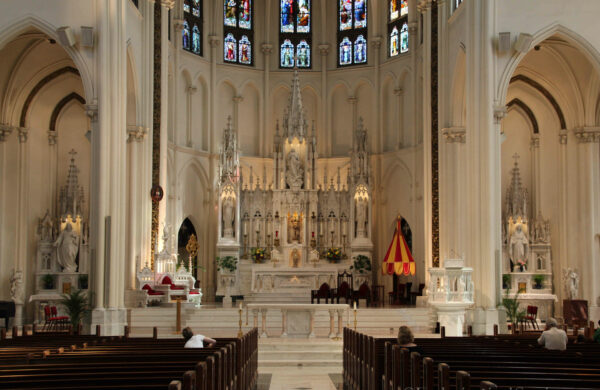
The altar in the Mary Chapel allows a closer view of the altar linen. The edge of the linen is cut so that it hangs over the front of the altar by a few inches. This linen edge is embroidered using the colors of white and gold. There is so much white inside this Basilica. The gold provides a much-needed contrast so the altar linen is not lost among all of the other whites of the chapel. The design motifs of the altar linen feature a cross worked in gold embroidery thread, and a wheat and grape motif worked in white embroidery thread. The edge of the altar linen is scalloped with a scalloped or shell satin stitch, making a perfect complement to this lovely Basilica

St. Alban’s was consecrated on September 17th, 1887. Following the consecration the Prince and Princess of Wales hosted a lunch on their royal ship for those who had worked to make the church a possibility. This church, although first and foremost a house of worship promoting freedom of religion, was as much a tool to connect European nations.
You must be logged in to post a comment.